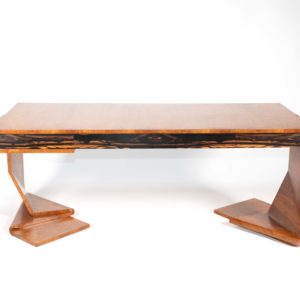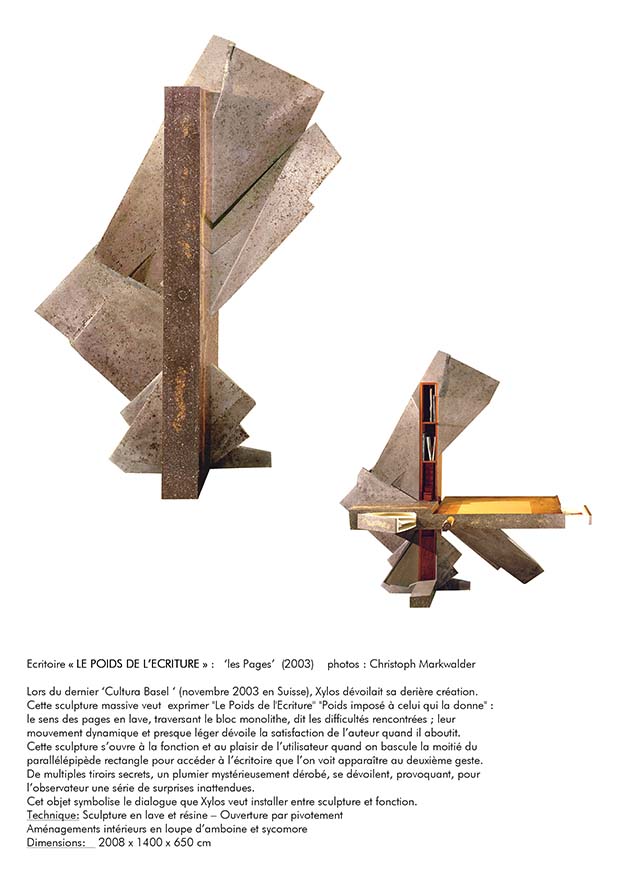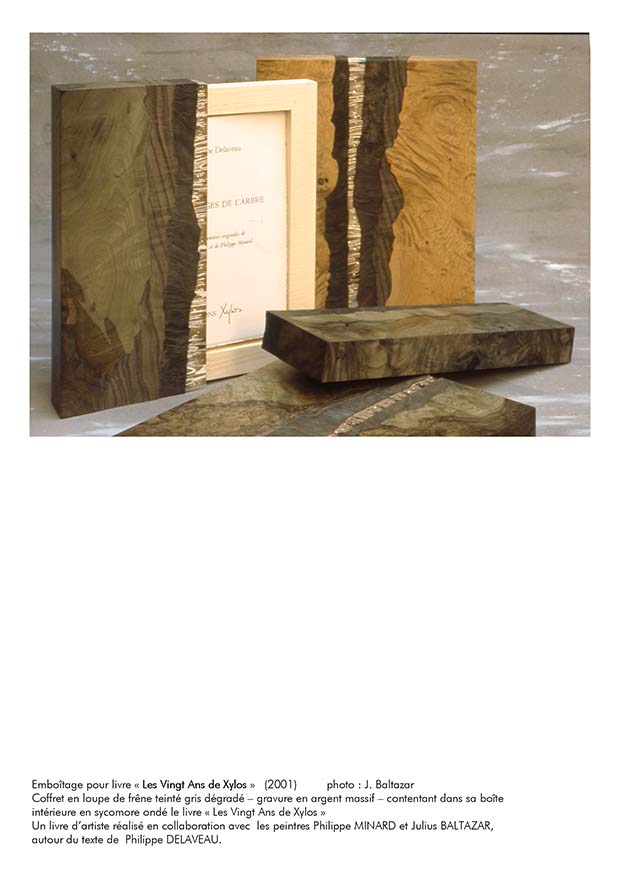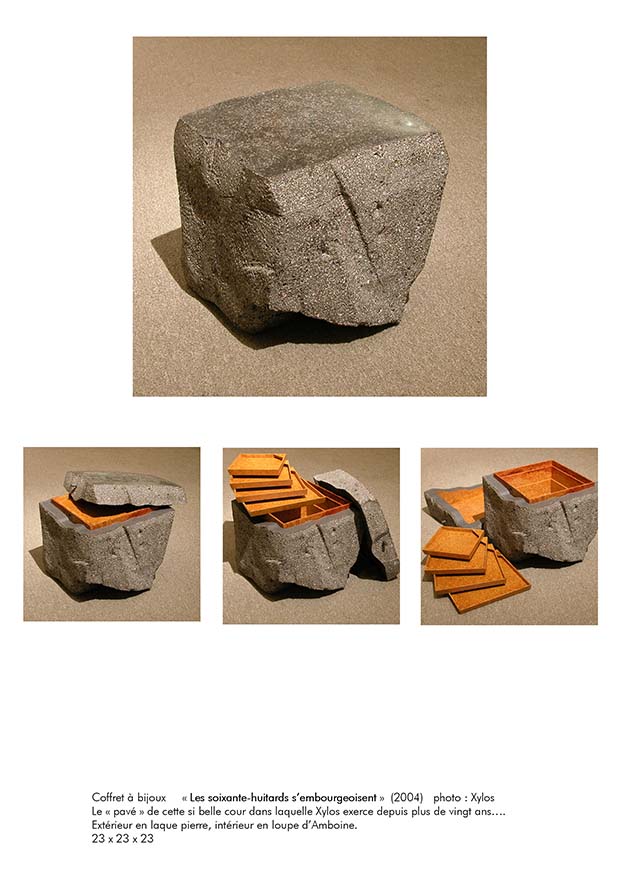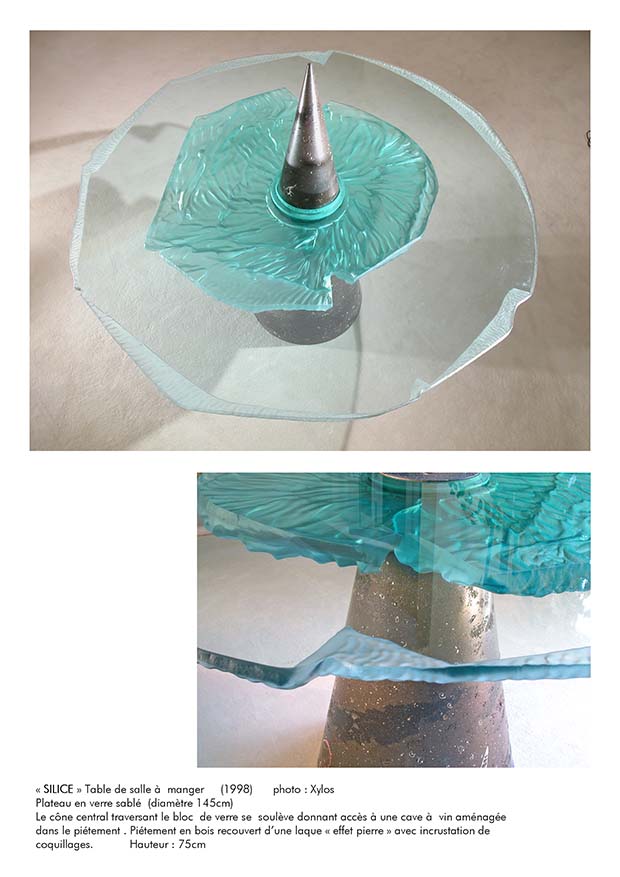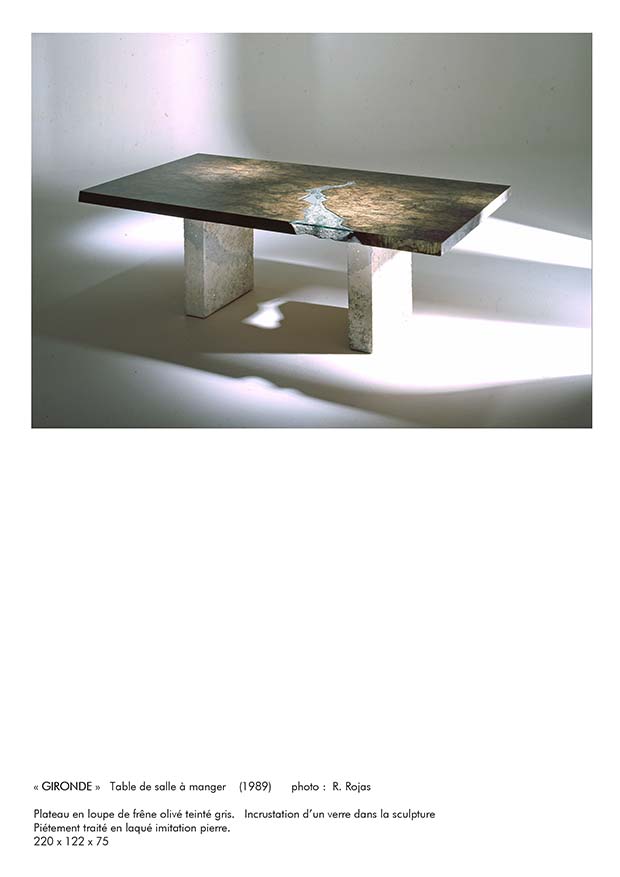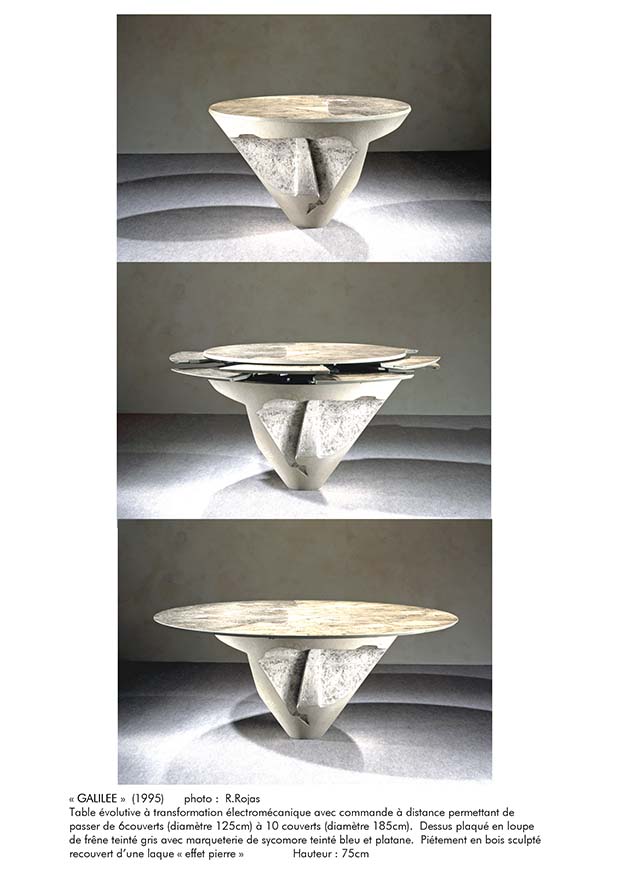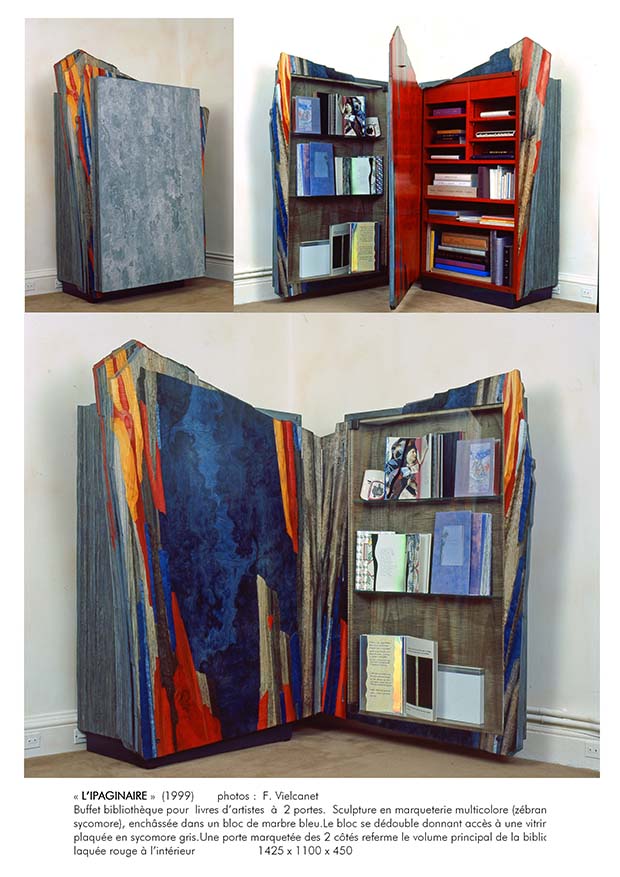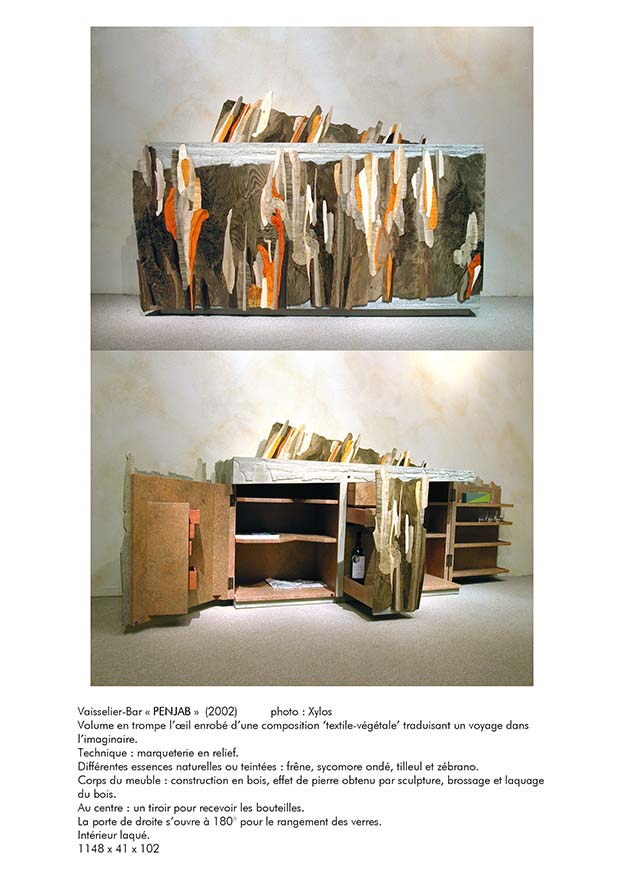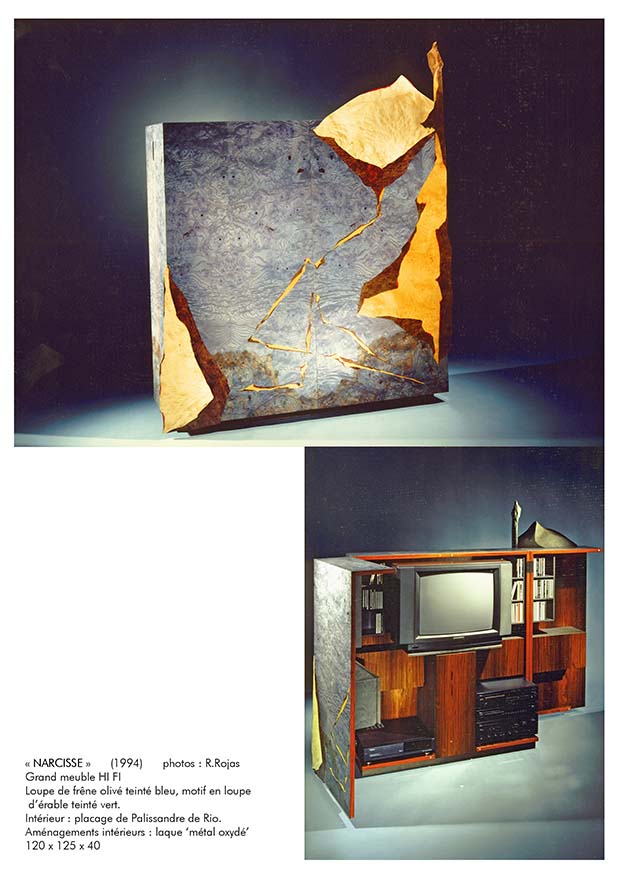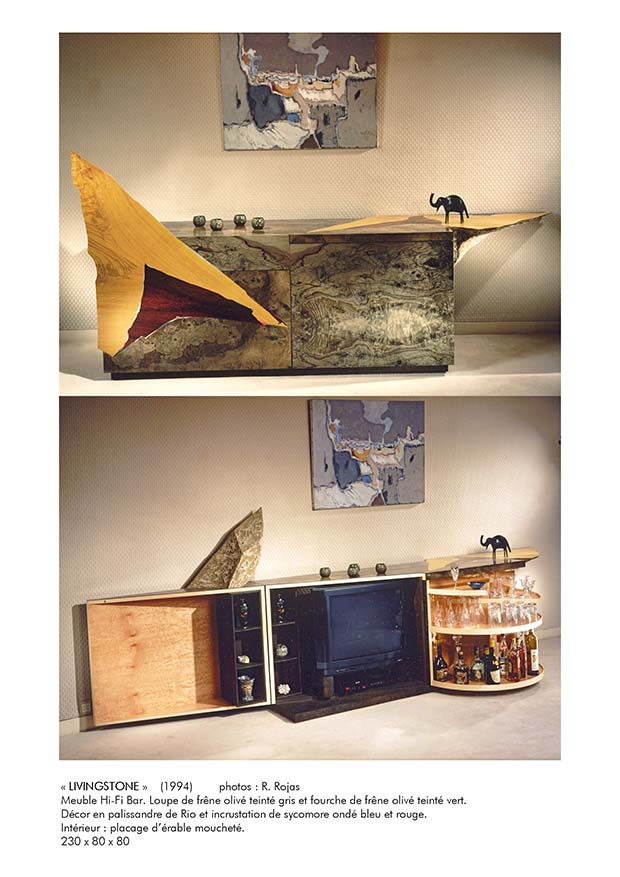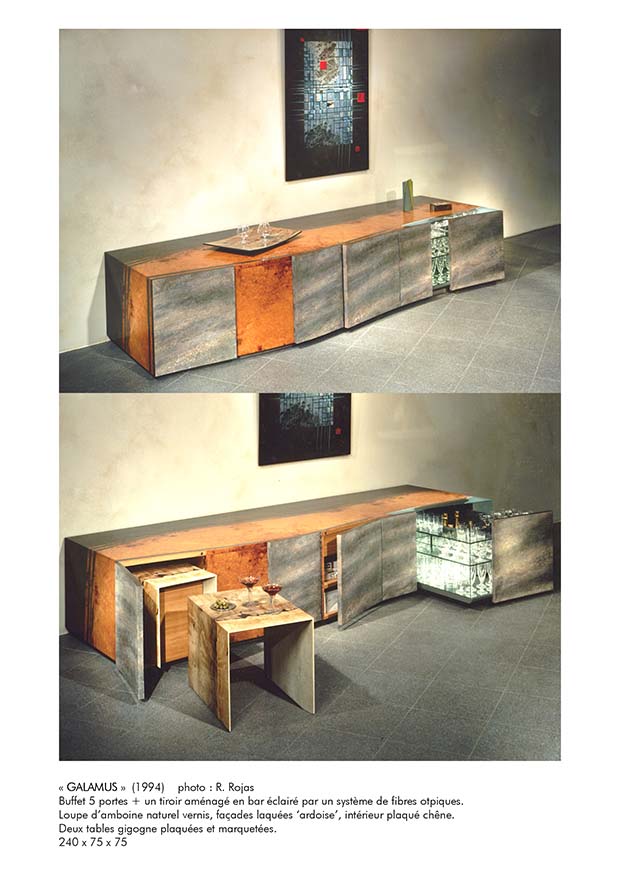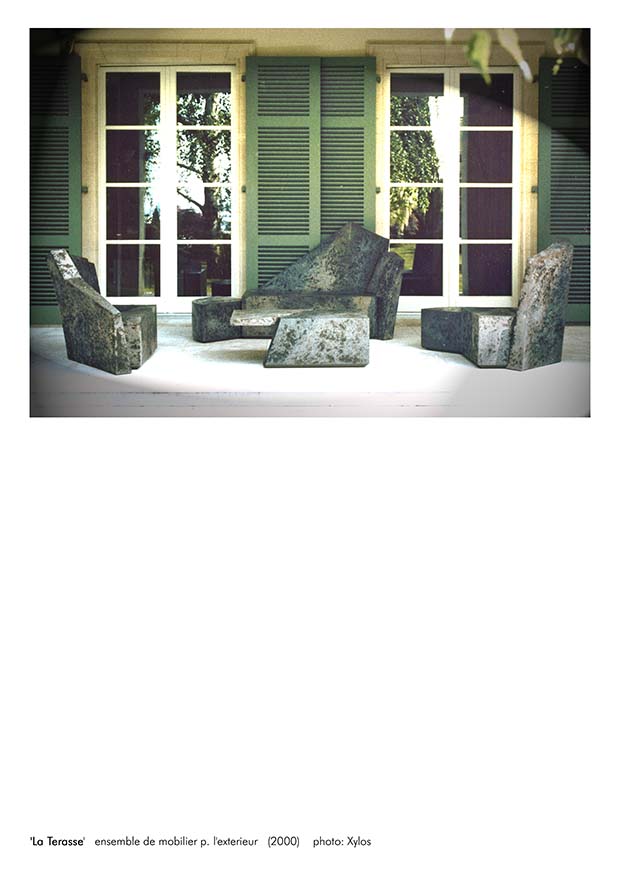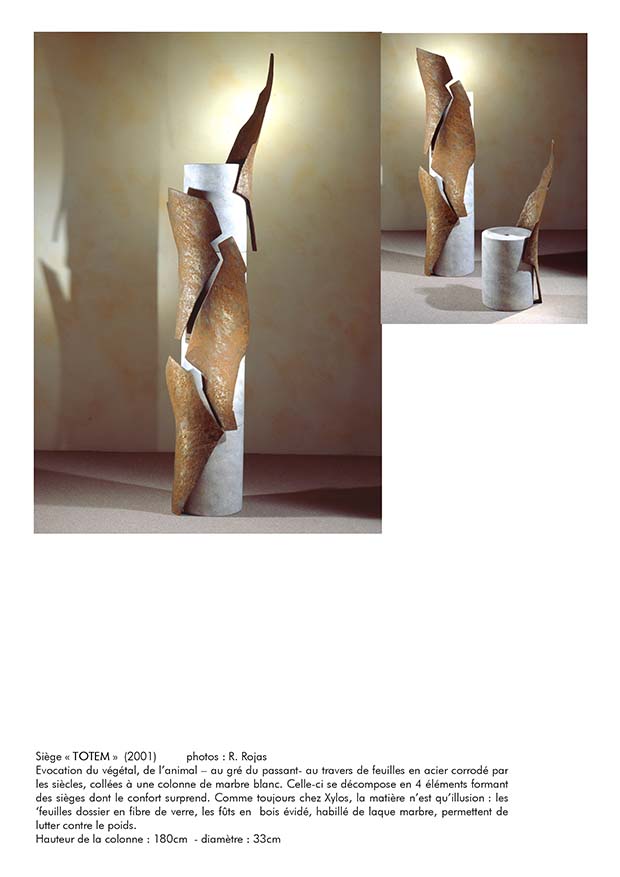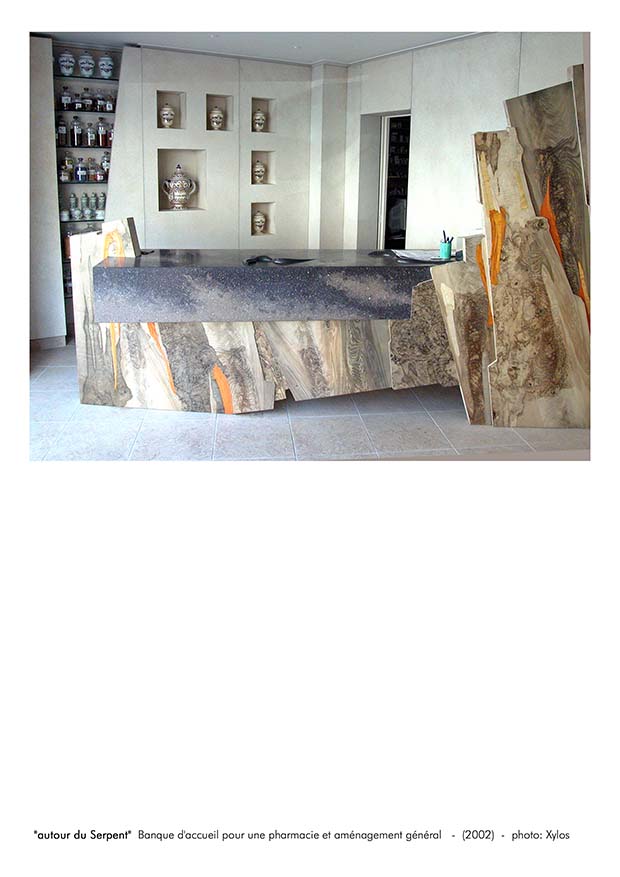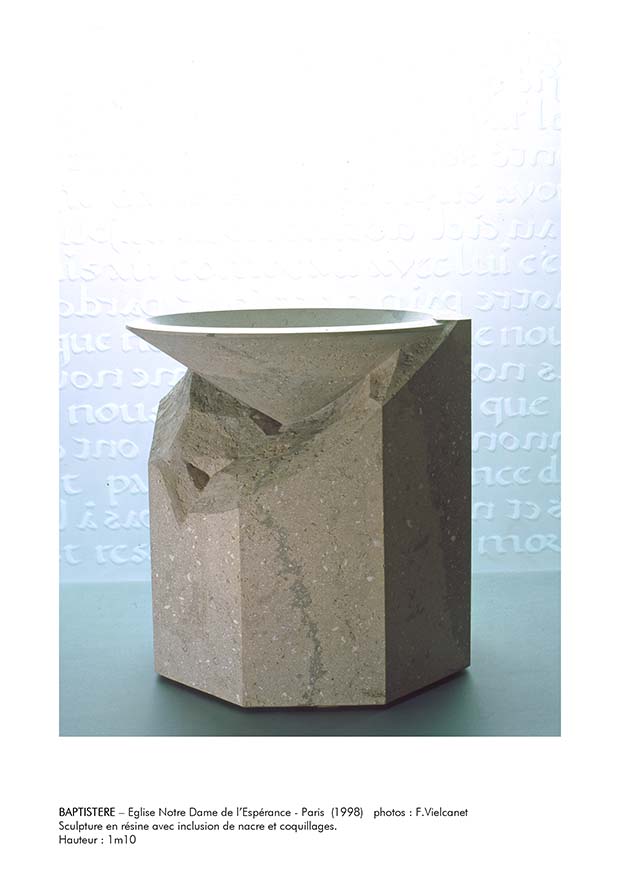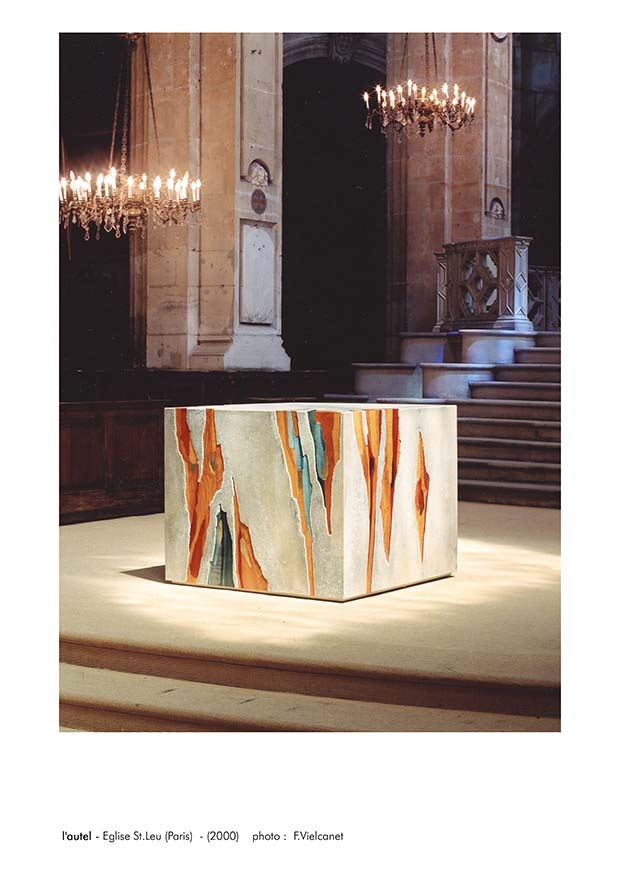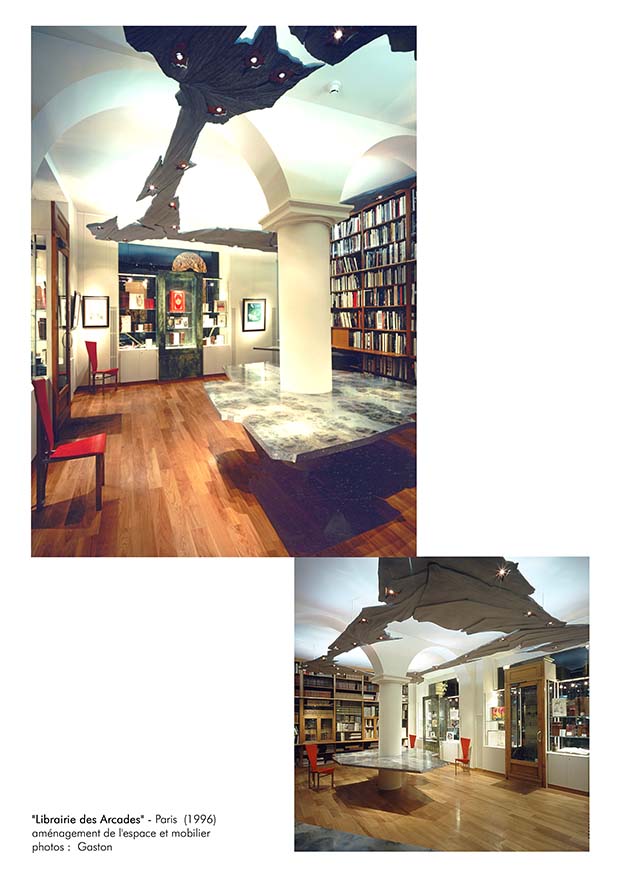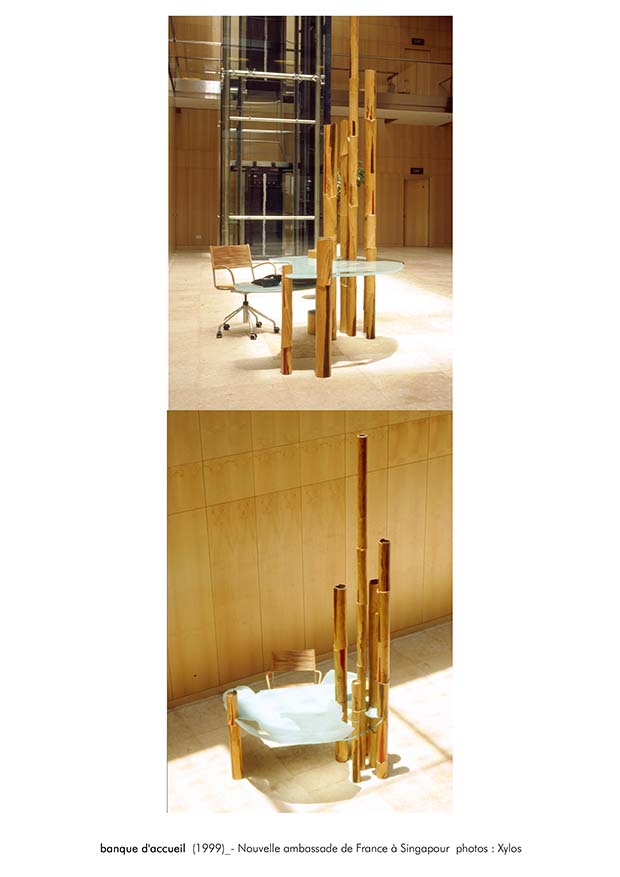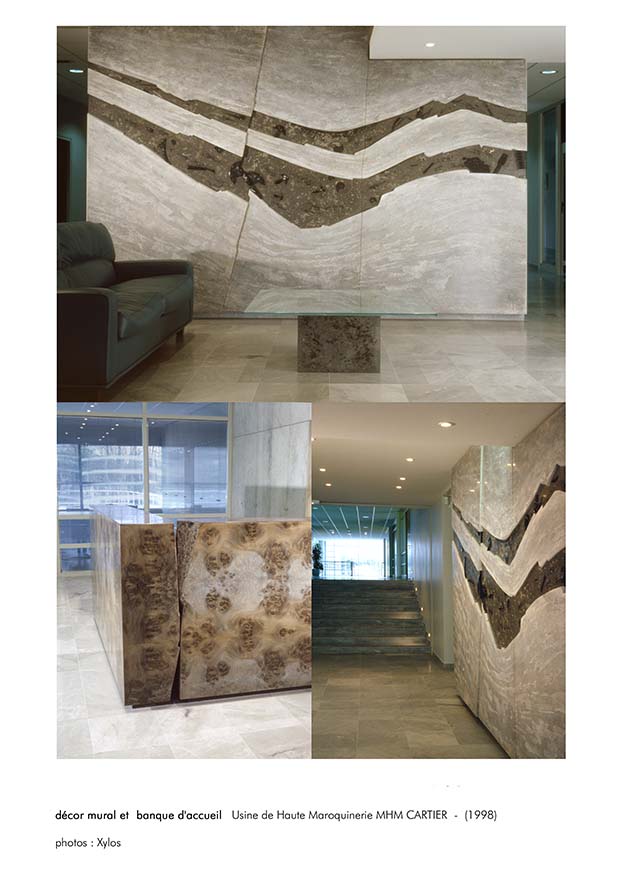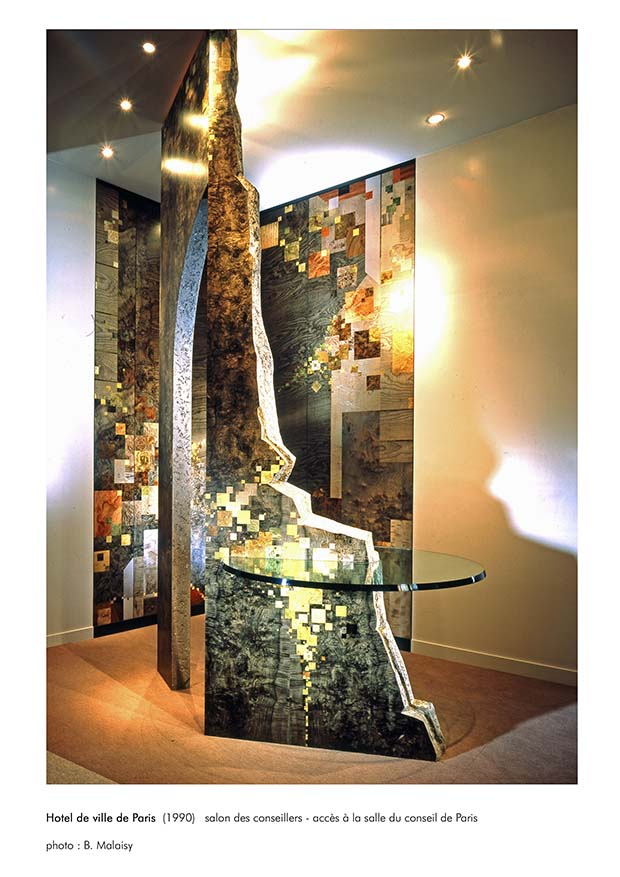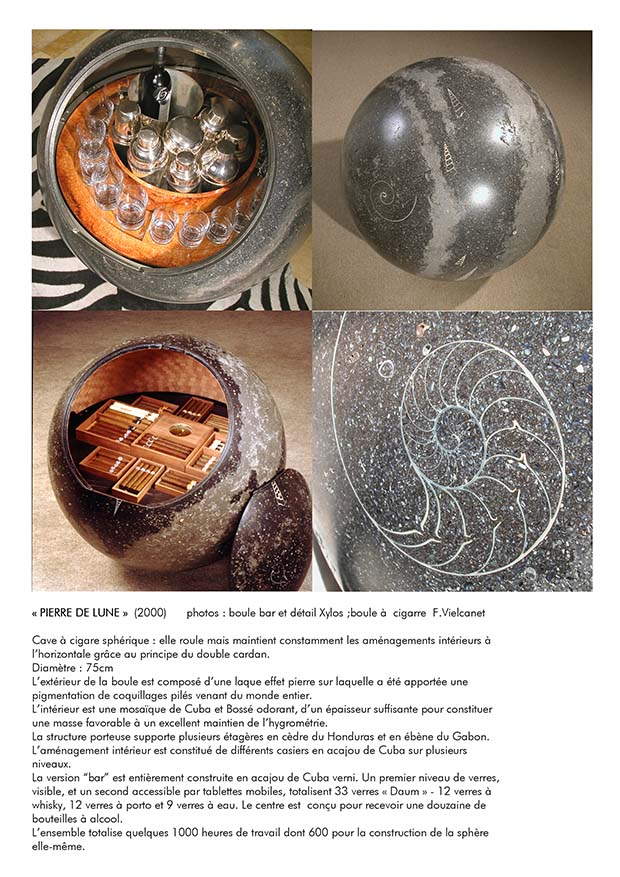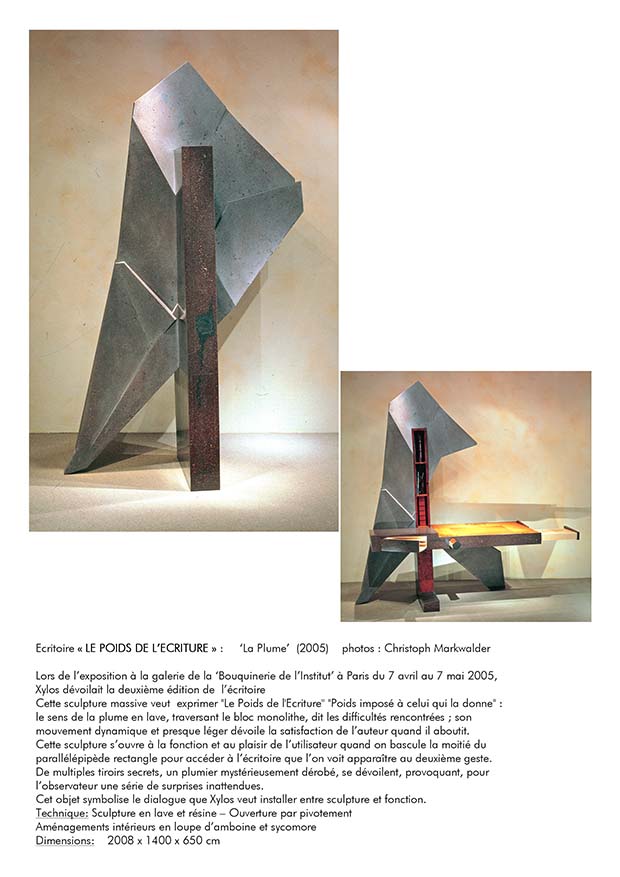
Four creative minds united in one idea: Xylos. Creative power at the highest artistic level.
Munich carpenter and cabinetmaker Martin Spreng, cabinetmaker Francis Ballu, architect Remi Colmet-Daâge and model maker Philippe Delaflotte founded groupe Xylos between 1980 and 1982. Their focus as a group of works was on highly specialised, exclusive interior design and unusual interiors. As a group of works they produced individual unique pieces and delighted art lovers all over Europe.
Magic of the material uniquely staged
The work of Xylos is characterized by unusual, noble materials such as natural and colored woods. These they combined in contrast with stone, glass and metal as well as elaborate lacquer and surface designs. Major commissions included marquetry walls for the Liederhalle Congress Centre in Stuttgart, the entrance hall at Cartier in Aix-les-Bains, Braun Melsungen medical near Kassel and the city hall of Paris.
Courageous experimenters on the edge of the possible
The work of Xylos is only conceivable as a result in the group. Not one of the artists is in the foreground in her works, but always the work as a team. All works are the result of a careful examination of the material, customer wishes and the inspiration of the four designers. In his works, Xylos freely reaches into the inventory of art history, translating it into new forms of representation and unusual structures, as this desk visibly demonstrates. In 2009, Xylos disbanded as a team that has created outstanding luxury goods in almost 30 years.
A desk like out of the hands of neo-cubists
The idiosyncratic and always meticulously worked out creations of Xylos prove to be the result of joint planning and constant dialogue. This is shown by the oak desk with veneered Courbaril and ebony, created between 1982 and 1983. It exemplifies the outstanding ingenuity of the four artists and their feeling for surfaces, structure and precious materials. Xylos’ penchant for idiosyncratic, high-precision, ingenious constructions makes this desk a special experience. In its formal language, the design picks up on the design principles of cubism, but these are translated more fluently and in softer drapery.
Beautifully mitigated geometry
The word cubism is derived from french cube or lat. cubus for cube. Charles Morice used the term in an article of April 16, 1909 in the Mercure de France about Braque’s paintings from the Salon des Indépendants. Louis Vauxcelles then established the term cubisme in his report on Braque’s works at the Salon of 1909. The name and the term, which was widely used in France at the beginning of the movement as a geometric style, grew out of the impression of the first viewers: they recognized a new way of representation in contemporary paintings with their geometric language of form.
Text: Kai Hunsicker / Photos: Gruppe Xylos



